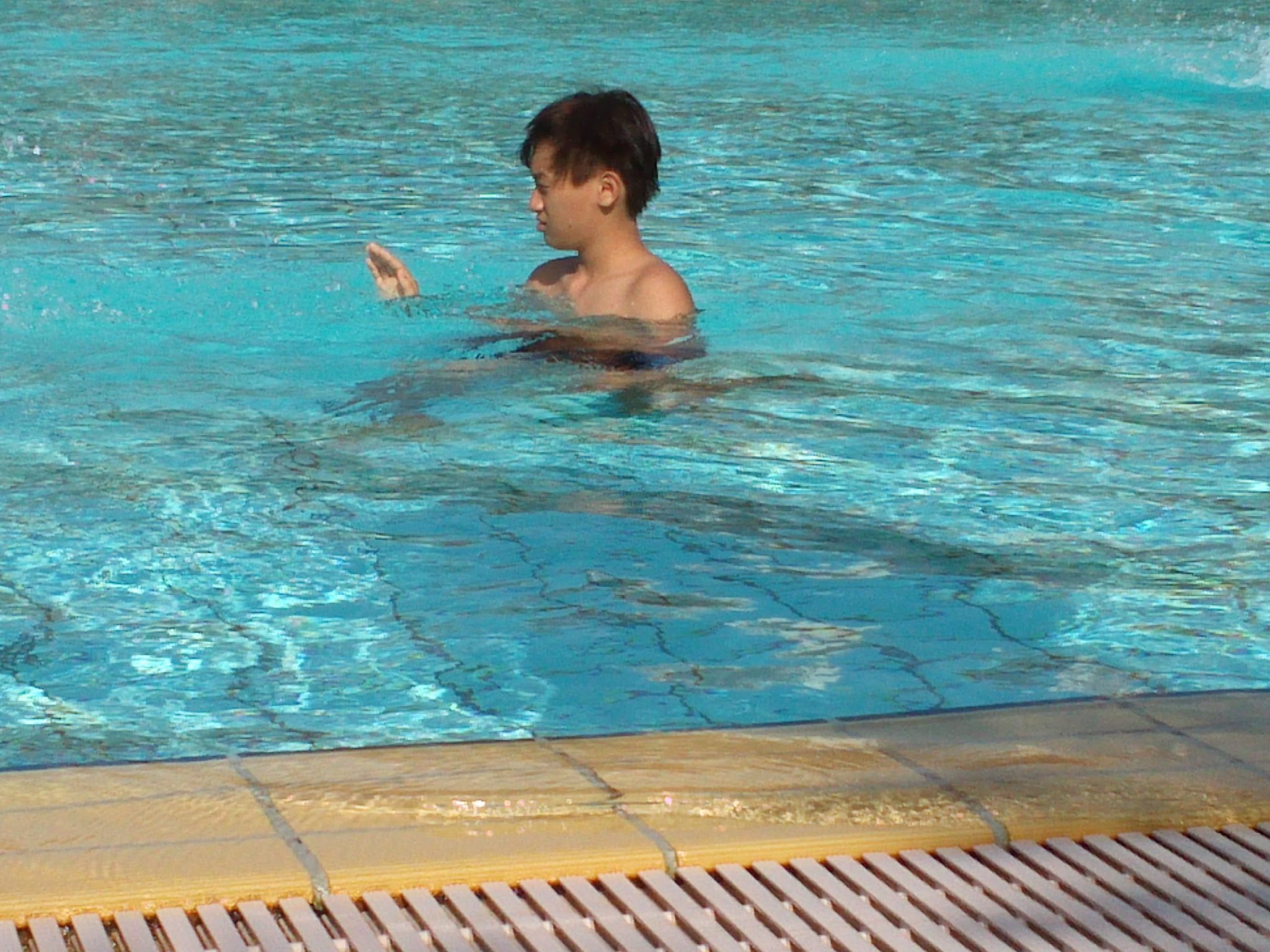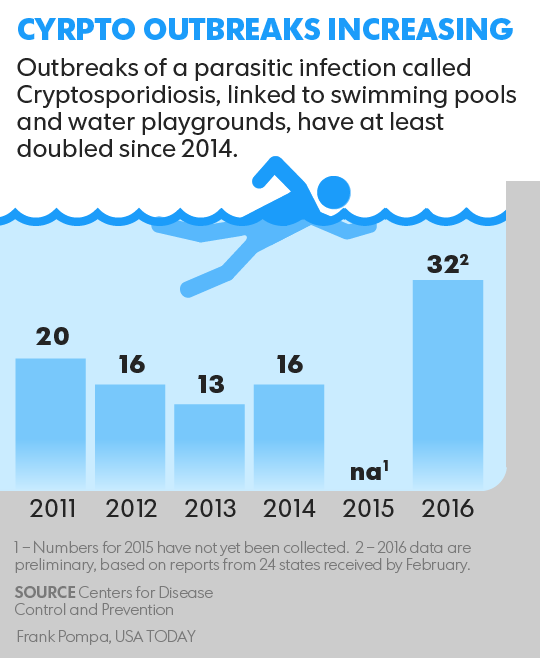Some icky news just in time for pool season: Reports of diarrhea outbreaks linked to cryptosporidium parasites in pools and water parks increased at least two-fold in two years according to federal health officials.
The parasite, called crypto for short and spread through human feces, caused at least 32 outbreaks in 24 states in 2016, compared with 16 nationwide in 2014, according to the federal Centers for Disease Control and Prevention. Final numbers for 2016, along with 2015 numbers, will come in a later report, but “we expect them to go up,” said Michele Hlavsa, head of CDC’s healthy swimming program.
It is possible the increase is linked to better reporting, but it is also possible the problem is becoming more common, Hlavsa said.
Total cases reported to CDC have increased from about 1 in 100,000 in the early 1990s to about four in 100,000 in recent years, she said. That means an average of 8,000 people a year suffer through up to three weeks of watery diarrhea, stomach cramps, nausea and sometimes vomiting — most often because they swallowed contaminated pool water.
Big outbreaks in 2016 included one in Arizona that sickened an entire Little League team and a cluster of outbreaks in Ohio that started in a water park and spread to nearby pools, contributing to nearly 2,000 cases statewide, adding to details published in CDC’s Morbidity and Mortality Weekly Report.
But do not be too quick to blame pool operators, Hlavsa said. Unlike other bugs that sometimes spread in pools, crypto is not quickly killed by chlorine. It can survive for up to 10 days, even in well-treated pools. As a result, it is the leading cause of illness linked to swimming facilities.
“This is a really tough bug to kill once it gets in the water,” Hlavsa said. When an outbreak is detected, operators have to close their pools and treat them with levels of chlorine that would not be safe for swimmers.
So how does the bug get in the water? It hitches a ride in poop — which is found in a distressingly high number of pools, at least half, according to a previous CDC study. And a lot of that excrement is coming off the bottoms of kids under age 5. One study suggested a big water park pool with 1,000 unwashed preschoolers could contain 22 pounds of fecal matter, Hlavsa said.
Here’s how to protect yourself and others, according to CDC:
Don’t swim when you have diarrhea and don’t let your kids swim when they have diarrhea.
Don’t swallow swimming water, in pools or elsewhere.
Shower before swimming.
Give kids frequent bathroom breaks
That last tip is important not just for preventing pooping accidents, but for keeping kids from urinating in the pool. One recent study found every pool tested contained urine. While urine does not cause illness directly, it depletes chlorine levels, giving germs a better chance to survive. It also causes eye irritation.
Source: USAToday











